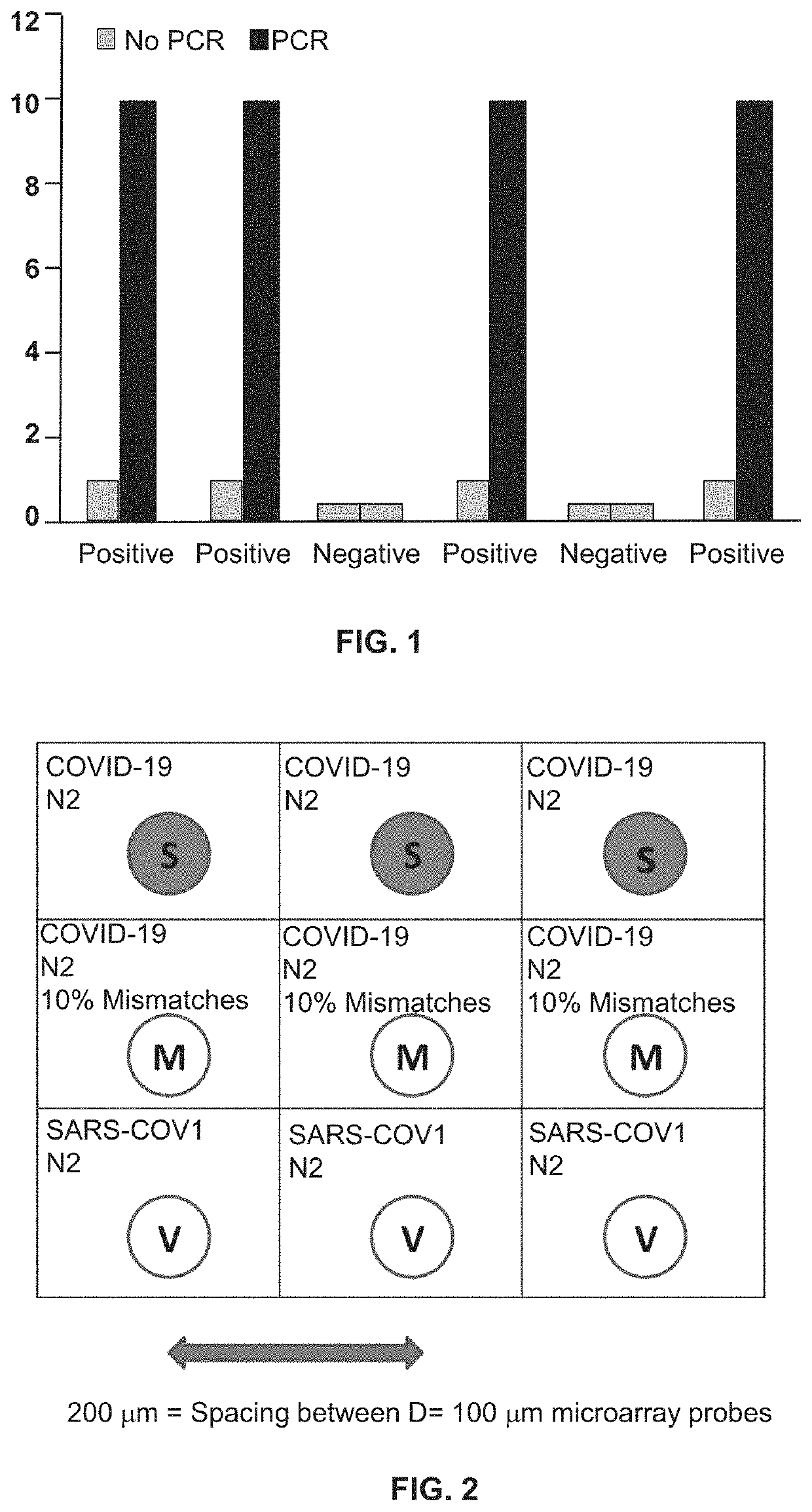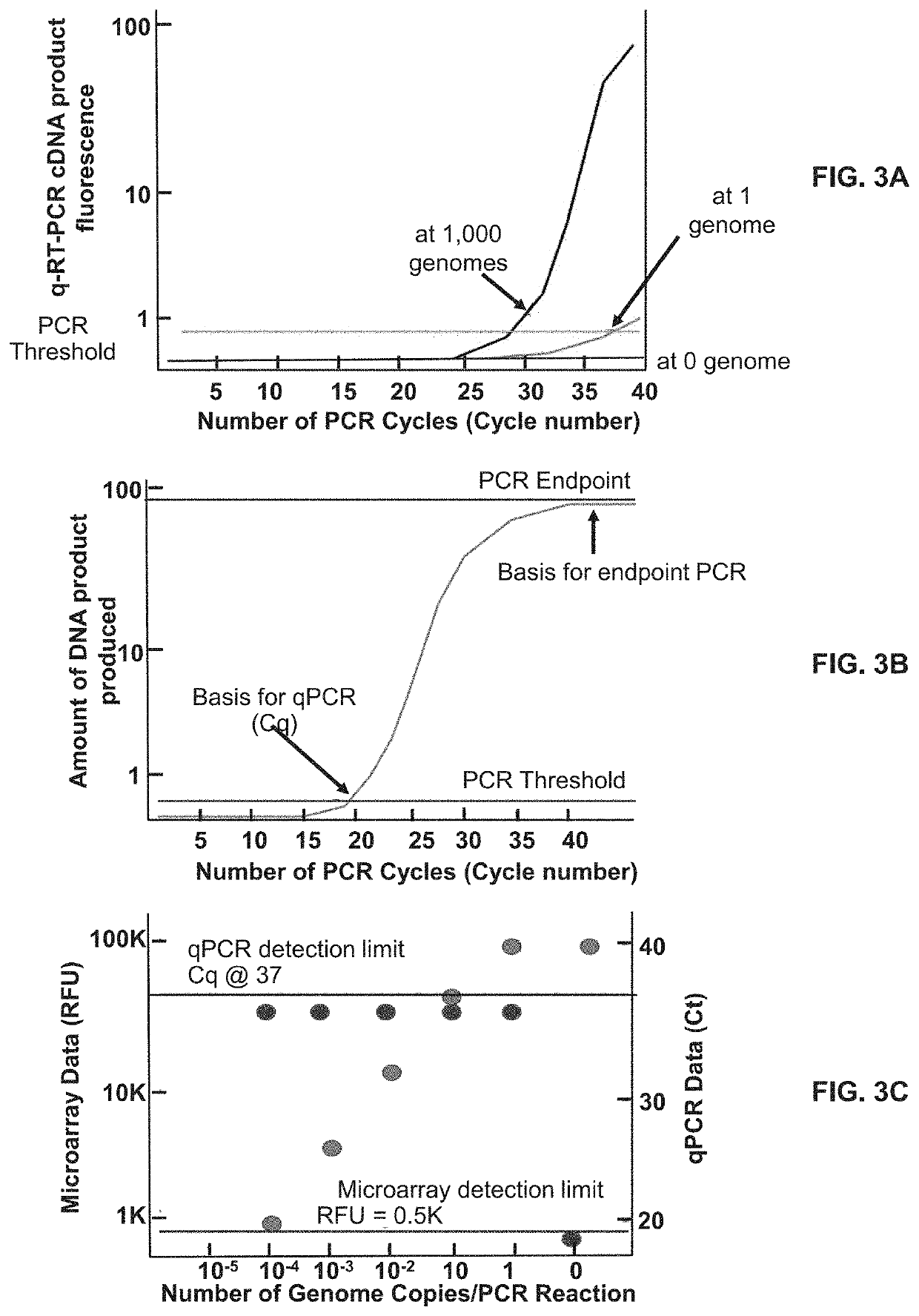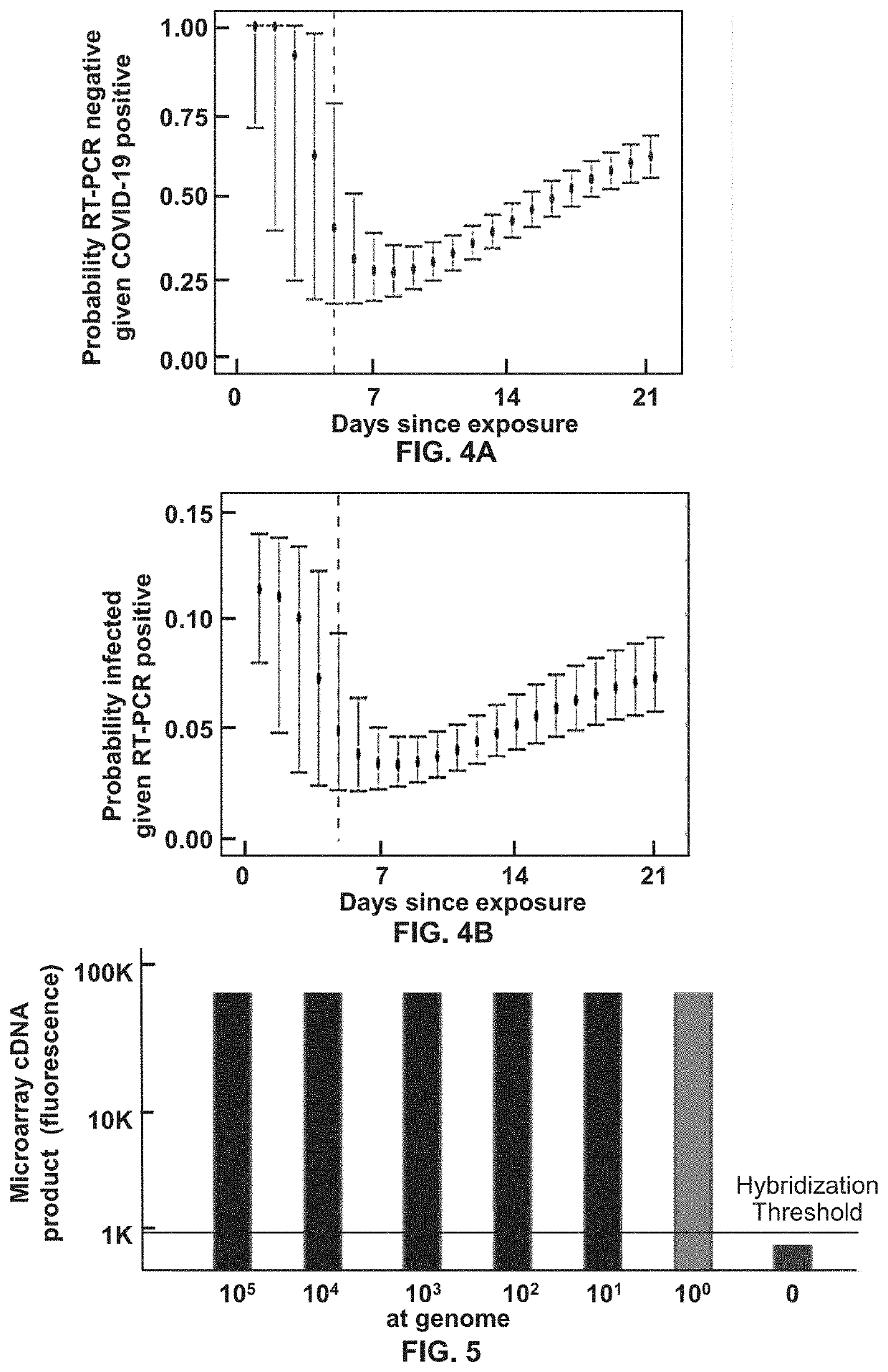Methods for Detecting Low Levels of Covid-19 Virus
a covid-19 virus and low level technology, applied in the field of multi-based viral pathogen detection and analysis, can solve the problems of q-rt-pcr being ineffective as a tool, reducing the value of epidemiology, and complexities expected to pose significant challenges to public health
- Summary
- Abstract
- Description
- Claims
- Application Information
AI Technical Summary
Benefits of technology
Problems solved by technology
Method used
Image
Examples
example 1
[0099]Tandem PCR (or RT-PCR, then Asymmetric PCR) Reactions to Enhance the Ability to Accurately Detect the Population Density (i.e. Molecules / μL) Near the Lowest Limit of Detection (LLoD)
[0100]The first of the two tandem reactions coverts segments of RNA genome into an abundance of amplified DNA. It is a type of Endpoint PCR reaction, such that the original RNA input is amplified 35 cycles, to form an Endpoint PCR product, wherein the input RNA target segments have been amplified to generate a maximal number of DNA amplicons.
[0101]The second PCR reaction, which may be a real-time or an endpoint PCR reaction, builds upon the first reaction such that if one or more molecules of DNA or RNA are input into the first reaction, that first PCR reaction produces an amplified DNA segment which has been amplified to yield a sample that may display up to a 10+6 fold increase in strand concentration within the amplicon product (FIG. 1).
[0102]The second PCR reaction additionally tags the PCR amp...
example 2
A Microarray to Measure Very Low Levels of a Virus Such as COVID-19
[0116]Based on the general principles described in background, a microarray test is described with a LLoD at about 1 viral genome per assay and as such more than 10× more sensitive than Q-RT-PCR. Such a >10× sensitivity enhancement enables the ability to detect and speciate COVID-19 at 100 virus particles per swab, which according to the literature is roughly 10× greater sensitivity than any known Q-RT-PCR reaction. Such LLoD performance is a direct result of 3 fundamental principles of tandem PCR coupled to microarray analysis.
Two 30 Cycle PCR Reactions Performed Serially, which Deliver, De Facto, 60 Cycles of Endpoint RT-PCR Amplification Prior to Microarray Analysis
[0117]RNA template input held constant, such a 2-step tandem RT-PCR+PCR reaction produces DNA amplicon (to support microarray hybridization) at a concentration that is >3 orders of magnitude greater than the amount of PCR amplified DNA which generates t...
example 3
DETECTX-RV-V2
[0159]The full content of the original DETECTX-RV assay is described in Example 2 and Table 4. Table 8 shows a variant (DETECTX-RV-V2) of that Pan Coronavirus format. It is based on SARS-CoV2 analysis at (N1,N2) as in the original assay and differs in the inclusion of 2 new microarray probes and an additional RT-PCR primer pair to interrogate the recently described novel S-D614G mutant (5) in the same assay.
TABLE 8Streamlined COV1D-19 Analysis, DETECTX-RV-V2TargetMicro-RowSites / arrayPCR#Viral TargetVirusProbesPrimers1SARS-CoV2 (hCoV-19)N221 set2SARS-CoVN213hCoV-19 / pangolin N21(groups 1 and 2)4hCoV-19 / bat / Yunnan / RaTG13 N21(2013)5Bat_SARS-like_CoVZC45 N21and XC216hCoV-19 / bat / Yunnan / RmYN02N217SARS-CoV2 (hCoV-19)N121 set8SARS-CoV2 (Mutation)S-D614G21 set9Internal ControlRNAse P11 set
[0160]The streamlined DETECTX-RV-V2 assay deploys 12 microarray probes, which when printed in N=12 multiplicity, become a highly redundant 144 probe array suitable for printing in the present 12...
PUM
| Property | Measurement | Unit |
|---|---|---|
| fluorescent | aaaaa | aaaaa |
Abstract
Description
Claims
Application Information
 Login to View More
Login to View More - R&D
- Intellectual Property
- Life Sciences
- Materials
- Tech Scout
- Unparalleled Data Quality
- Higher Quality Content
- 60% Fewer Hallucinations
Browse by: Latest US Patents, China's latest patents, Technical Efficacy Thesaurus, Application Domain, Technology Topic, Popular Technical Reports.
© 2025 PatSnap. All rights reserved.Legal|Privacy policy|Modern Slavery Act Transparency Statement|Sitemap|About US| Contact US: help@patsnap.com



